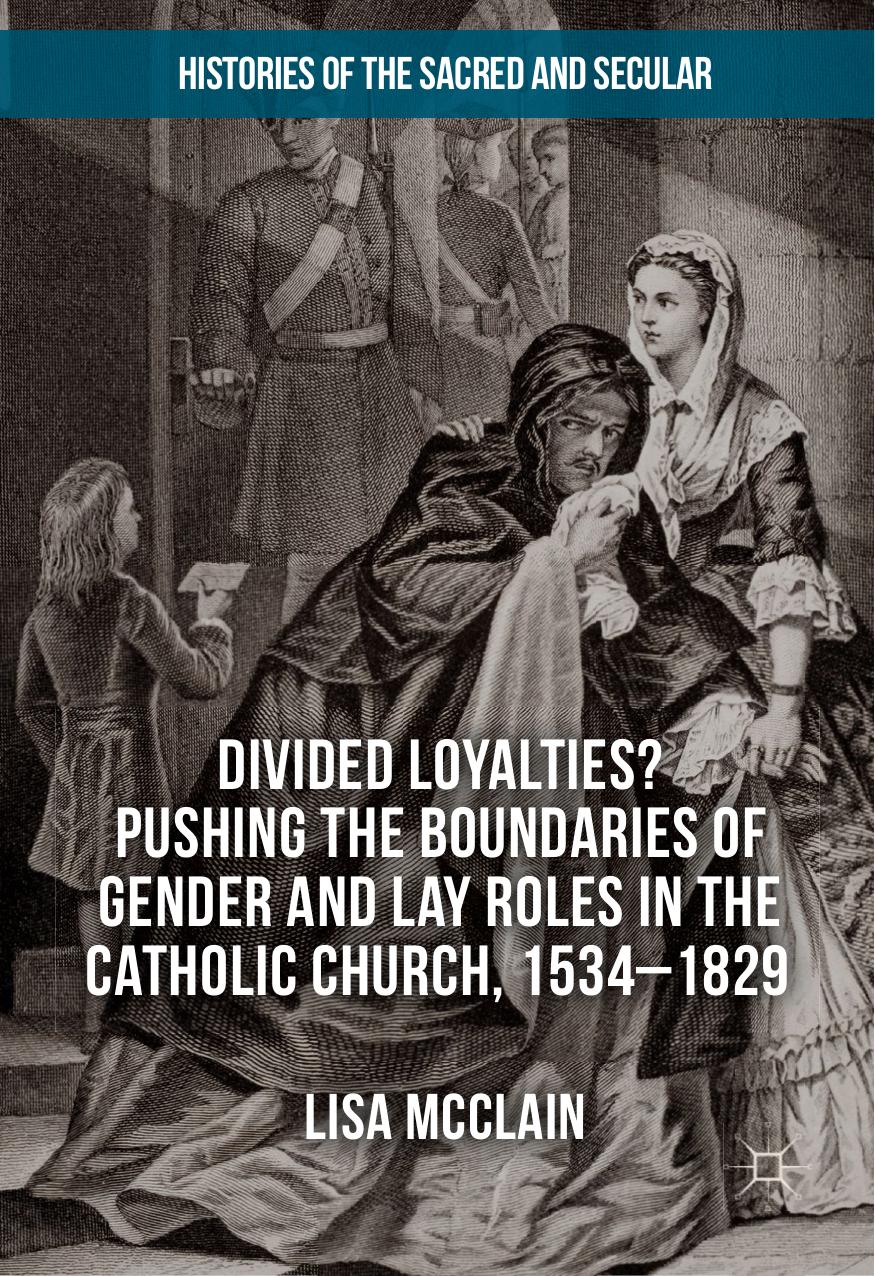Divided Loyalties? Pushing the Boundaries of Gender and Lay Roles in the Catholic Church, 1534-1829 by Lisa McClain

Author:Lisa McClain
Language: eng
Format: epub, pdf
Publisher: Springer International Publishing, Cham
âThe Only Thing We Have to Fear Is Fear Itselfâ
Every marriage is different and, in the end, there were many ways that marriage partners worked through the conflicting demands of religion and gender in their households. Henry Cary feared this process. He was certain that the disaster of his own mixed marriage would be repeated in households throughout the British Isles. âIn a short time,â he worried in a December 1626 letter to Sir John Coke, âwe shall have unhappy divisions made in all the families of the kingdom as is now begun in mine, to the hazard of great and manifest mischiefs and dangersâ (Wolfe 2001, 271). Henry dreaded the fulfillment of Gougeâs and Whatelyâs prophecies that if society did not uphold the hierarchy of the family, the state would fall. His wifeâs unwillingness to submit to his masculine and religious leadership would only encourage Catholics to defy not only their spouses but the government (293â94). Yet Henry was wrong.
Instead, by the end of the eighteenth century, most men and women experienced a gradual easing of marital tensions over these issues as options were tried, discarded, or adopted. This was true in many types of marriages: those in which both partners were recusants, when one partner conformed, or when one was Catholic and the other Protestant. As the Clitheroe, Mawhood, and other marriages in this chapter demonstrate, this process of adaptation began in the first decades after Protestant reforms and continued until Catholic Emancipation.
Husbands and wives began to share leadership of their families in worldly and religious matters in an increasing variety of ways. Wives, in particular, exercised more choices on a broader array of issues, especially those involving household authority and salvation. They controlled family property, thus assuming partial responsibility for maintaining their families. They arranged baptisms and Masses, thereby undertaking elements of religious leadership in the home. They did so when their husbands were absent but also when they were present. Wives frequently expressed their willingness to act in such ways as part of their commitment to fulfilling Godâs will, reminiscent of Catherine Holland , Gertrude More , and Mary Wardâs more detailed explanations of their renegotiations of traditional gendered and religious authorities. Women now seemed more confident ascertaining Godâs will for themselves, and making many decisions usually made by menâhusbands, clerics, and fathersâfostered this greater confidence. Husbands, in contrast, also shared their traditional male authority in the home with other men in new ways: Catholic clerics visiting or living within their walls, or even Protestant officials who confiscated their weapons or sequestered their property. This could be a contentious process or a cooperative one depending on how the men involved understood and prioritized male privilege and religious obligation.
Most Catholic women and men undertook such burdens to cope with irreconcilable pressures and needs in their day-to-day lives, but societal attitudes took decades, if not centuries, to catch up to, and recognize, this lived reality: women trusting their consciences and making their own choices; men understanding their authority
Download
Divided Loyalties? Pushing the Boundaries of Gender and Lay Roles in the Catholic Church, 1534-1829 by Lisa McClain.pdf
This site does not store any files on its server. We only index and link to content provided by other sites. Please contact the content providers to delete copyright contents if any and email us, we'll remove relevant links or contents immediately.
Cecilia; Or, Memoirs of an Heiress — Volume 1 by Fanny Burney(31324)
Cecilia; Or, Memoirs of an Heiress — Volume 3 by Fanny Burney(30928)
Cecilia; Or, Memoirs of an Heiress — Volume 2 by Fanny Burney(30885)
The Great Music City by Andrea Baker(21195)
We're Going to Need More Wine by Gabrielle Union(18065)
Bombshells: Glamour Girls of a Lifetime by Sullivan Steve(13101)
Pimp by Iceberg Slim(12923)
All the Missing Girls by Megan Miranda(12739)
Fifty Shades Freed by E L James(12443)
Norse Mythology by Gaiman Neil(11874)
Talking to Strangers by Malcolm Gladwell(11861)
Crazy Rich Asians by Kevin Kwan(8341)
Mindhunter: Inside the FBI's Elite Serial Crime Unit by John E. Douglas & Mark Olshaker(7827)
The Lost Art of Listening by Michael P. Nichols(6462)
Enlightenment Now: The Case for Reason, Science, Humanism, and Progress by Steven Pinker(6403)
Bad Blood by John Carreyrou(5761)
The Four Agreements by Don Miguel Ruiz(5502)
Weapons of Math Destruction by Cathy O'Neil(5029)
We Need to Talk by Celeste Headlee(4861)
